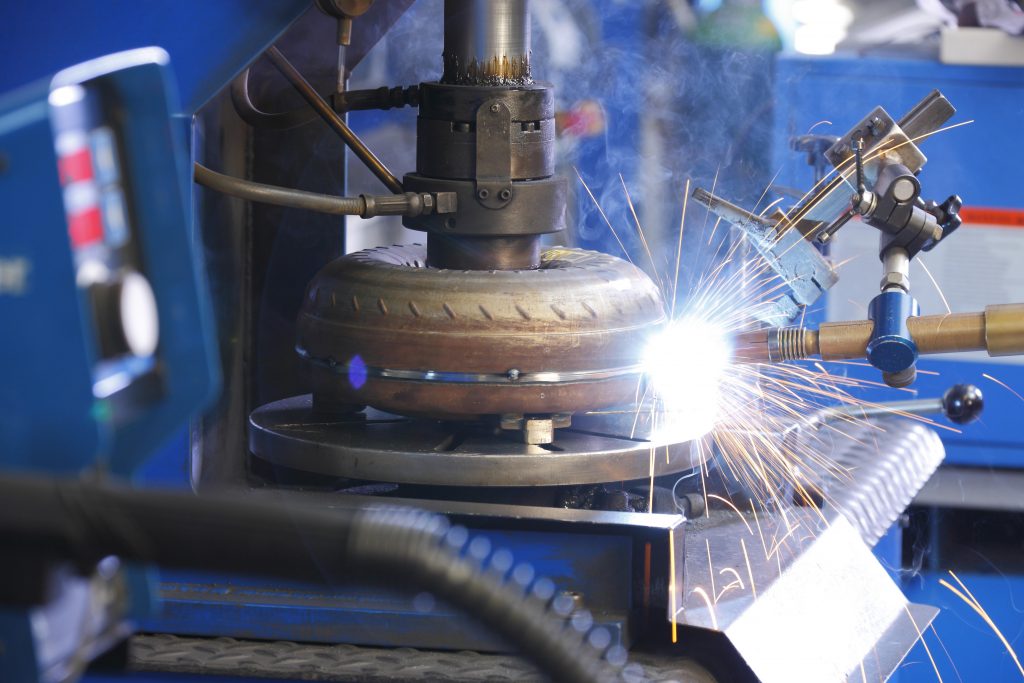
A torque converter is a doughnut-shaped internal engine component that connects your vehicle’s flexplate (the flywheel) to your transmission. It contains a series of curved blades and is filled with transmission fluid.
The three major components are the impeller, turbine, and stator. A lockup clutch is also included in some applications. When your vehicle is accelerating, the system uses torque multiplication.
Increased Torque Capacity
A torque converter is a fluid coupling that allows the engine to spin independently of the transmission. It transforms mechanical energy from the engine into rotary motion that drives the transmission.
Torque diversity is highly dependent on the size and geometry of the turbine and stator blades, and it can reach a maximum of 5.0:1 in exceptional cases. Drag racing automatic transmissions, for instance, use modified torque converters with high stall ratios to increase off-the-line performance and power delivery. On the other hand, highway vehicles often utilize lower stall ratios to reduce heat production and improve fuel efficiency.
A torque converter also includes a stator, which redirects the fluid from the turbine to the pump closer to its center. This helps eliminate elastomer seal wear and power loss from friction. Some modern torque converters also incorporate a lockup clutch that mechanically locks the pump and turbine at higher speeds, reducing energy losses and improving efficiency.
Reduced Power Loss
The torque converter’s fluid coupling works like two fans facing each other. When one fan plugs into a power source and starts to move, it will automatically begin to drive the second fan. The fans are the same size and weight, so they’ll spin at nearly the same rate.
However, the fluid between them will inevitably lose energy and generate heat. This causes impelling losses within the torque converter, which wastes power and reduces efficiency. Fortunately, modern torque converters are often designed with lockup clutches that physically link the turbine and impeller together at high speeds, removing the fluid coupling entirely and reducing power loss.
While it may sound complicated, torque converters’ power and performance are well worth their complex design. They prevent stalling when the vehicle is in gear but isn’t moving, increase pulling power by multiplying engine torque during acceleration, and help drivers save on fuel costs by providing greater efficiency.
Greater Efficiency
The torque converter is a fluid coupling that multiplies torque in its simplest form. Its key component, the stator, sits between the impeller and turbine, drawing in transmission fluid and flinging it to the turbine near its center. This forces the turbine to spin and drives the transmission’s input shaft.
The turbine’s curved blades then convert the force into mechanical energy. This energy is then used to accelerate the vehicle. Torque converters with a high stall ratio allow drag racers to optimize engine launch by increasing their vehicle’s initial torque. Highway vehicles usually have a lower stall ratio to limit heat production and improve fuel efficiency.
To achieve even greater efficiencies, many torque converters have a lockup clutch that mechanically locks the pump and turbine together at high speeds so they spin at the same rate. This eliminates slippage, further increasing the torque multiplier and improving overall efficiency.
Reduced Maintenance Costs
Torque converters use fluid coupling to allow an engine or motor to spin independently of the transmission. This helps reduce the amount of wear and tear on drivetrain components, extending their lifespans and improving driving dynamics.
When your car is stopped at a red light, the torque converter keeps your engine running and passing power to the wheels while you’re waiting for traffic to clear. It’s a complex system that requires regular maintenance, but its benefits are well worth it.
The torque converter’s primary components are the impeller, turbine, and stator. As the engine accelerates, the fluid flows through the impeller to turn the turbine. This creates a centrifugal force that multiplies the available torque and then reverts to fluid coupling as the engine slows down again. Some models of torque converters also use a lockup clutch to prevent stalling and improve efficiency. For this reason, they’re handy for vehicles that must travel forward and reverse.